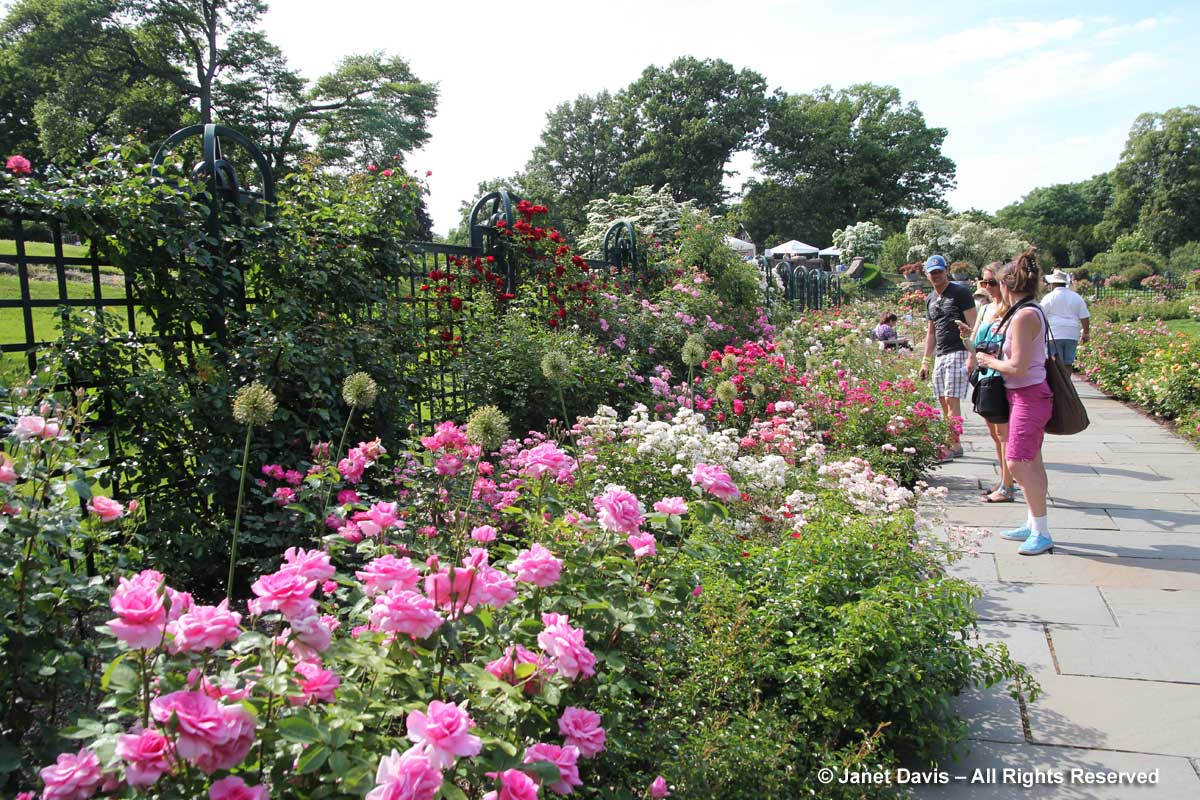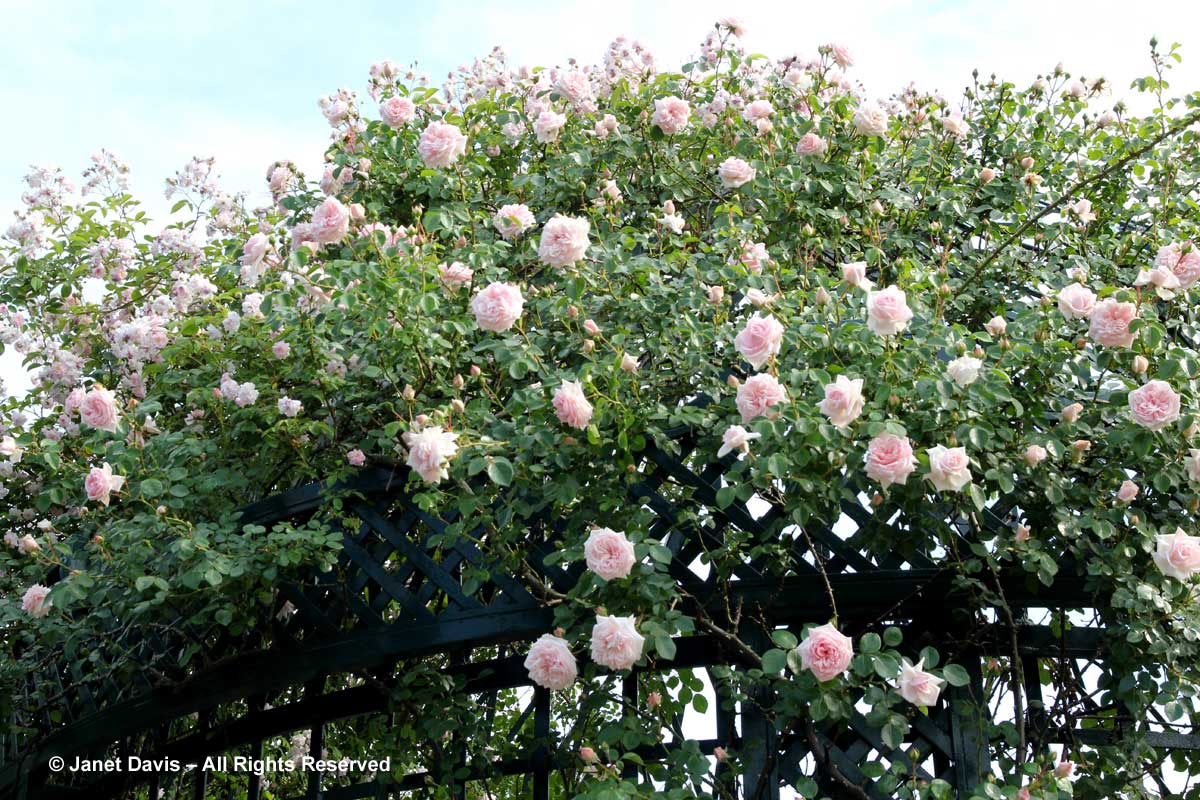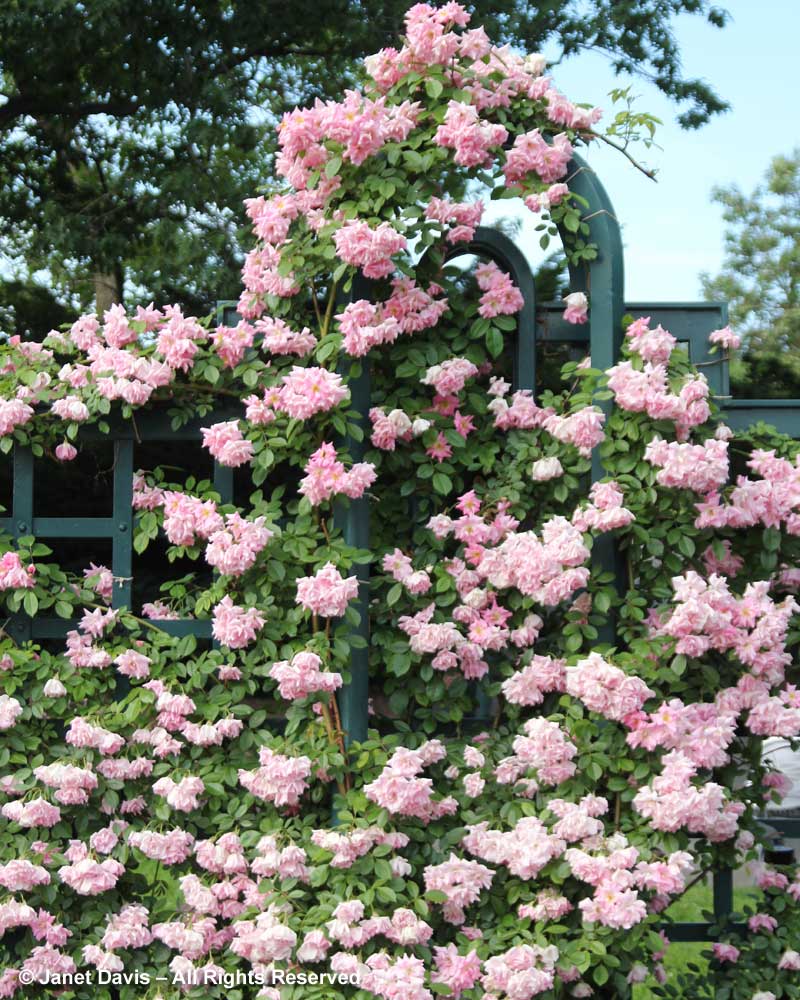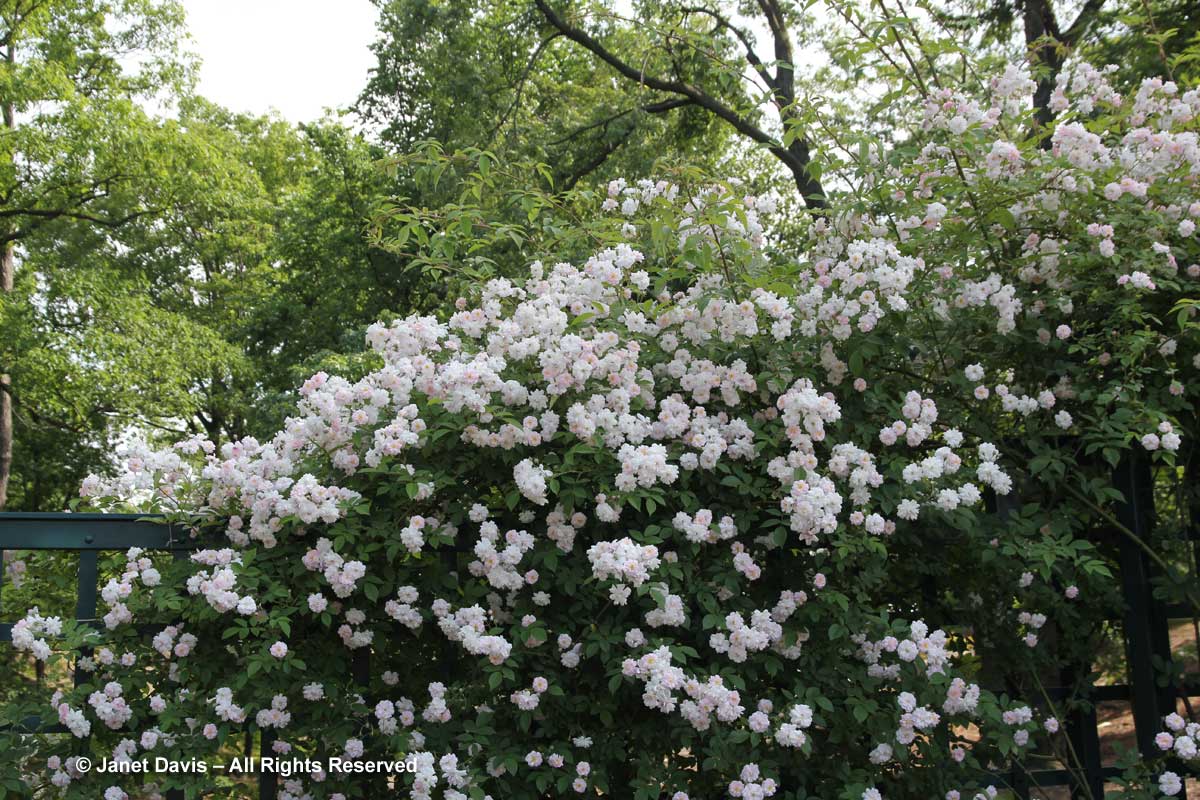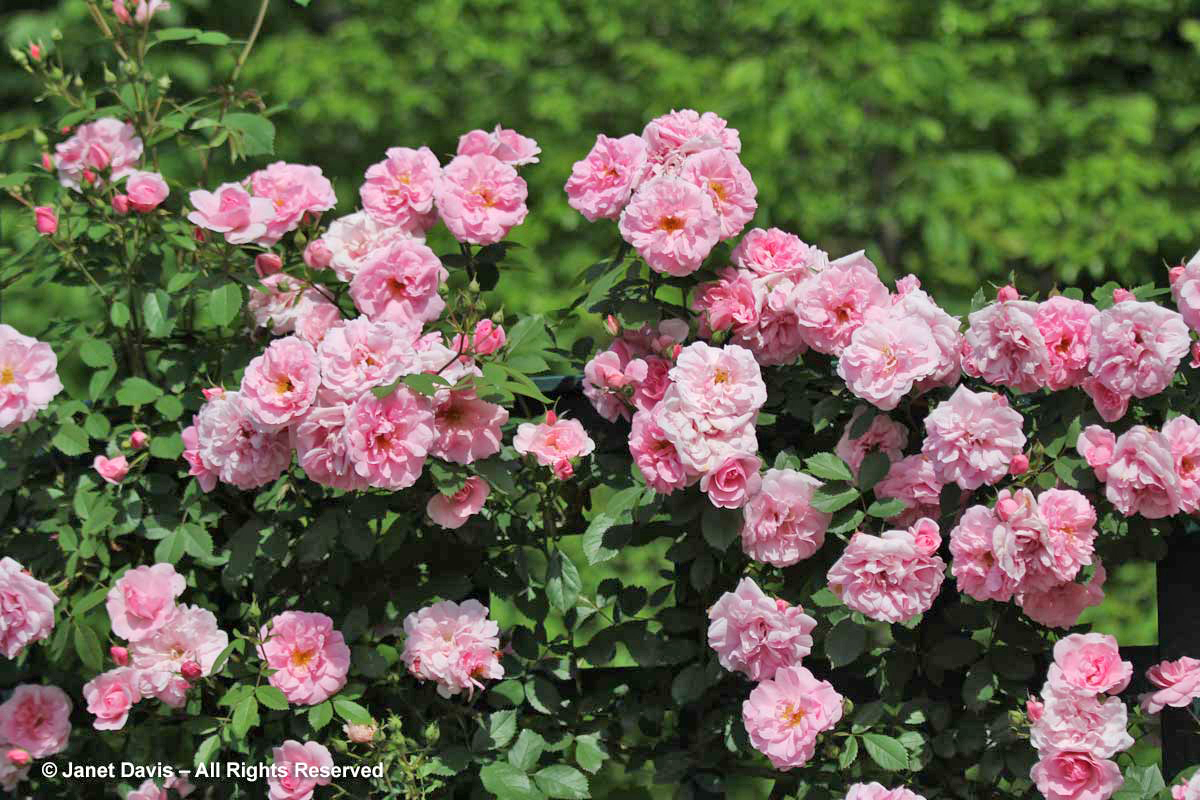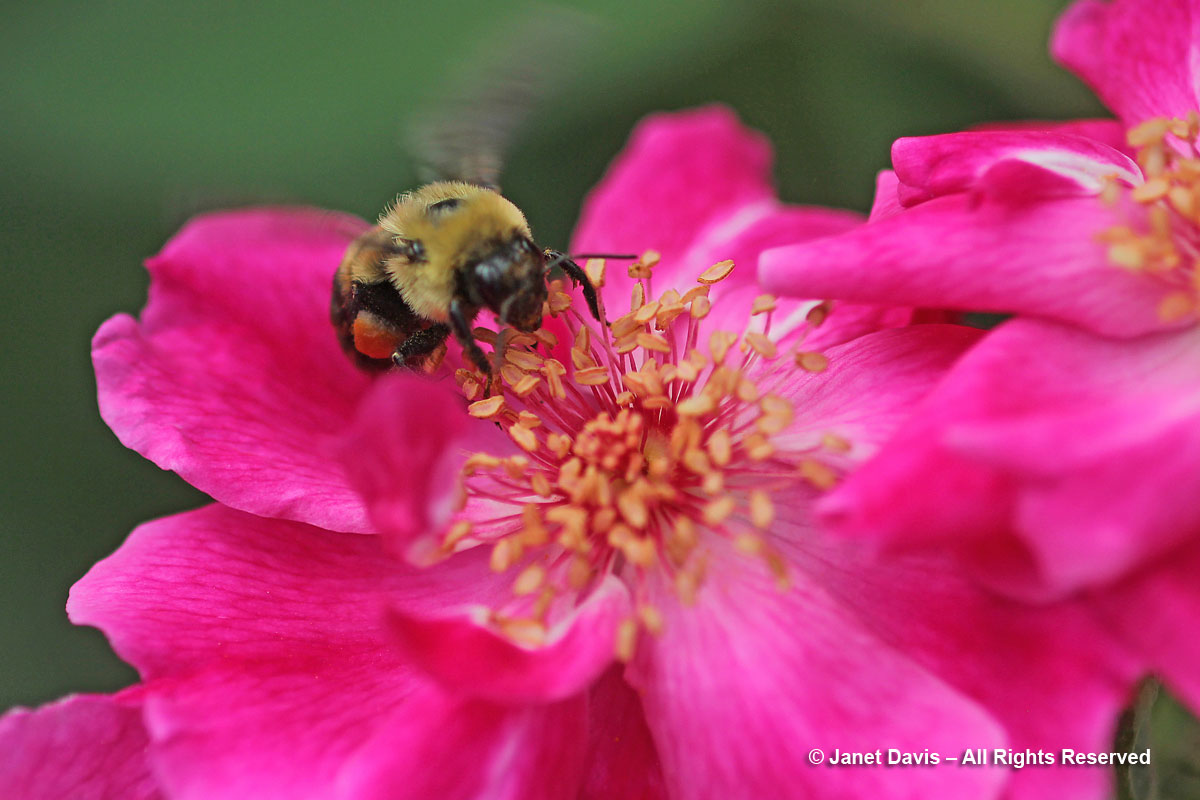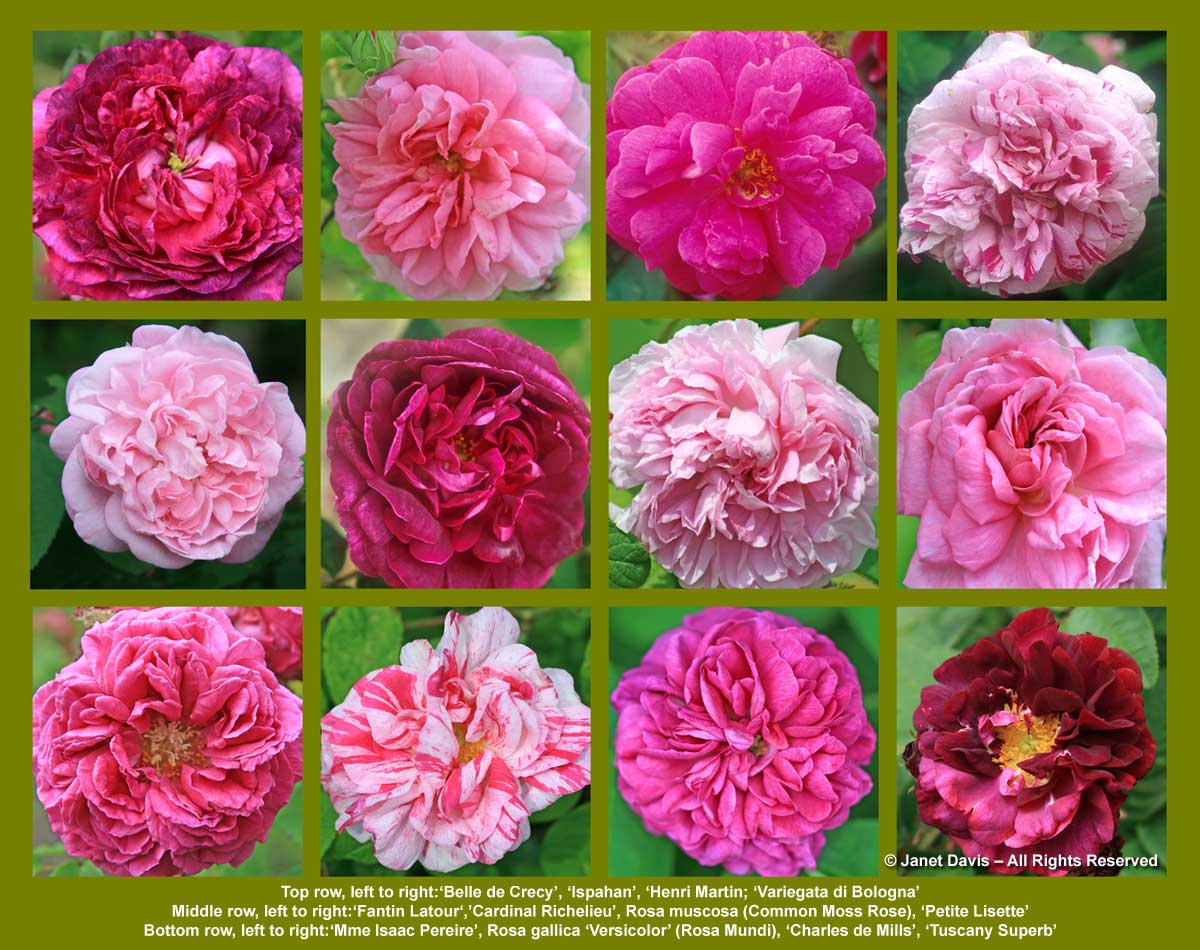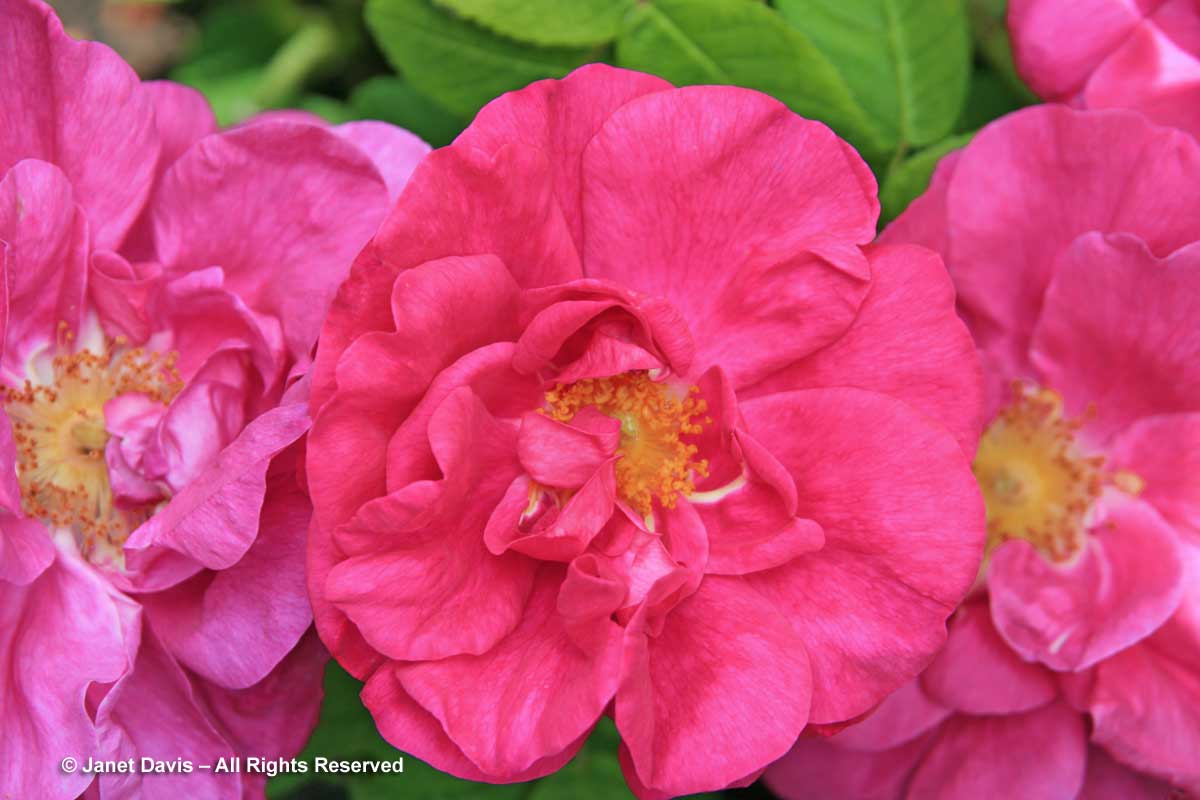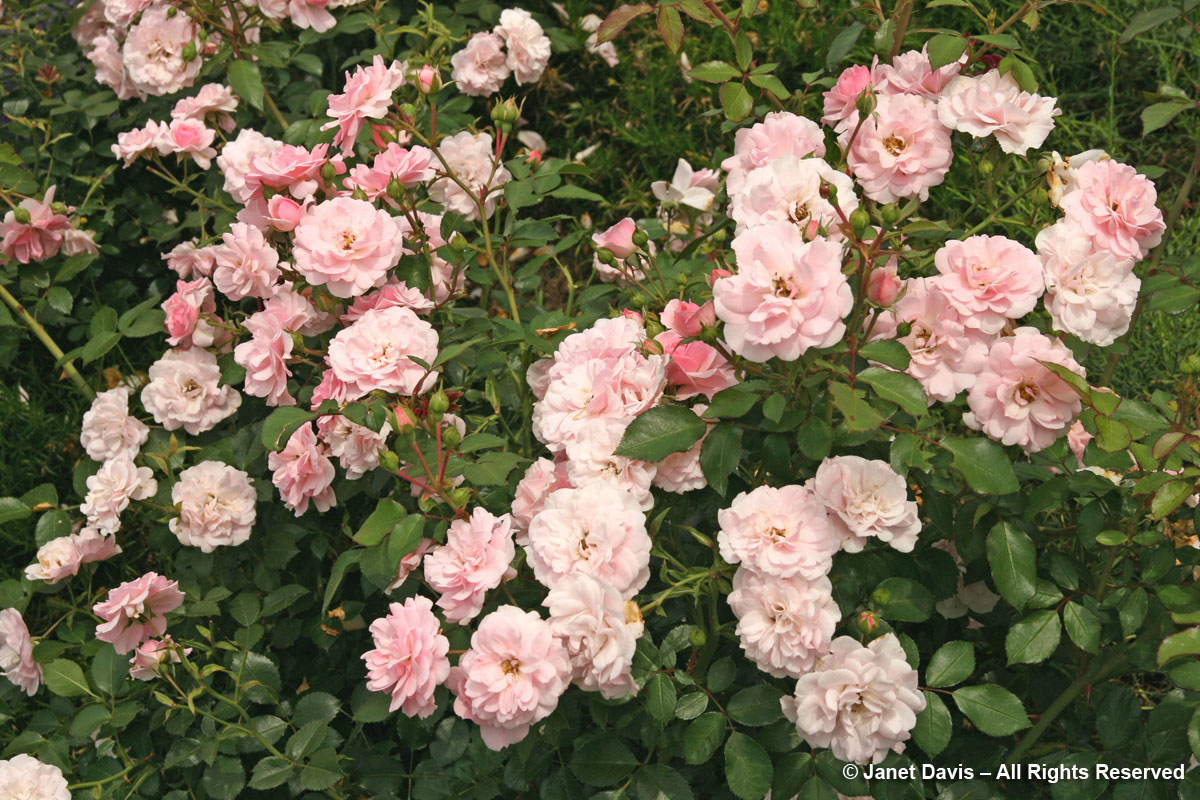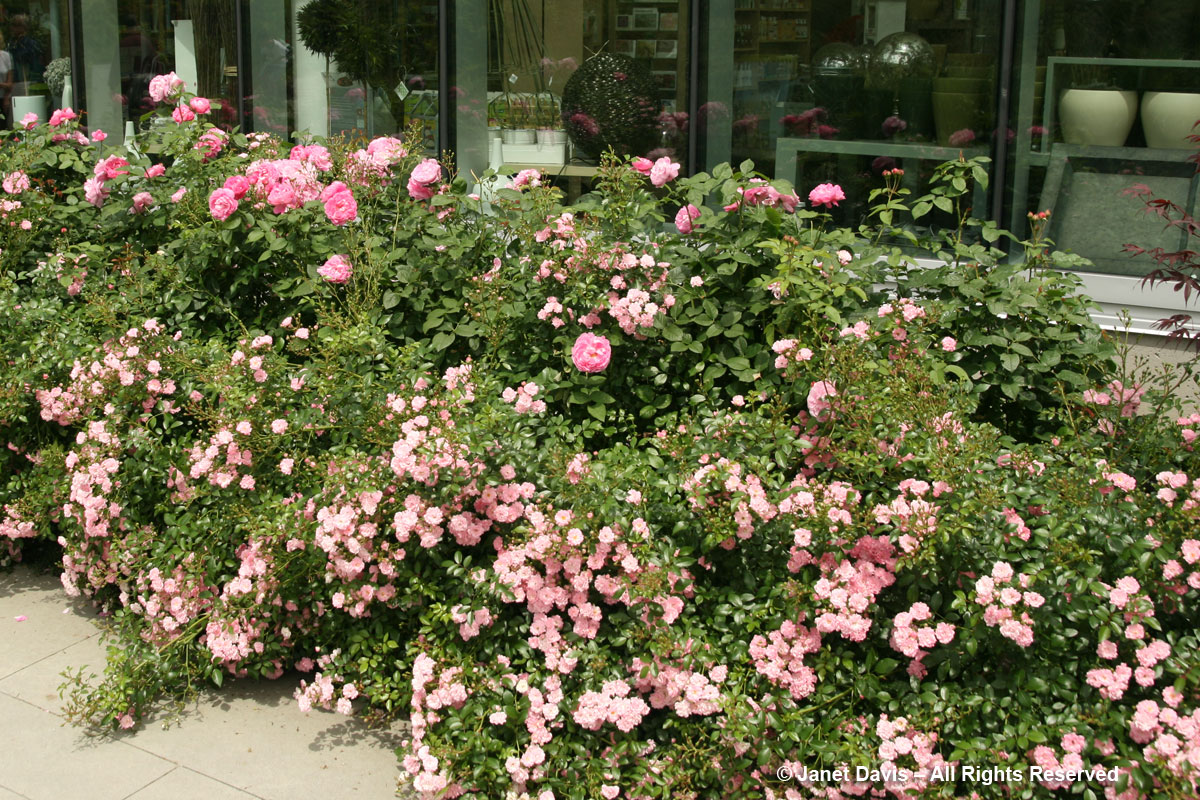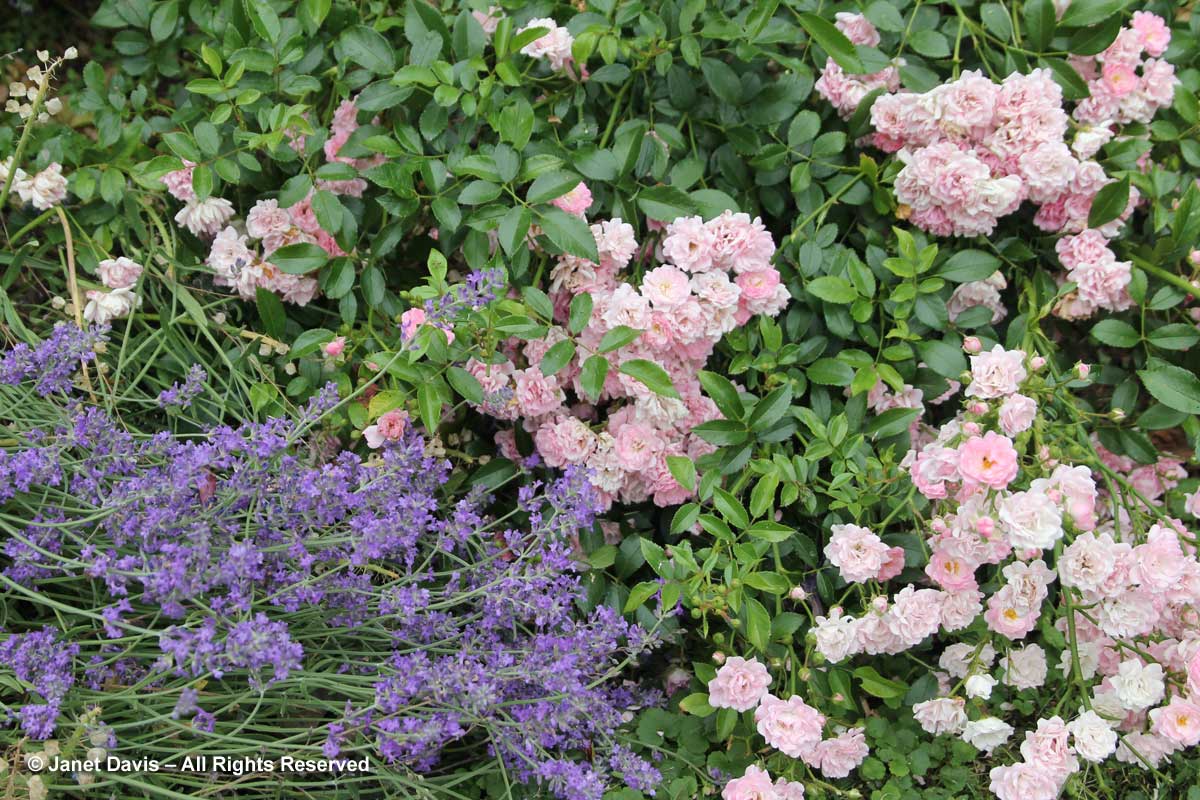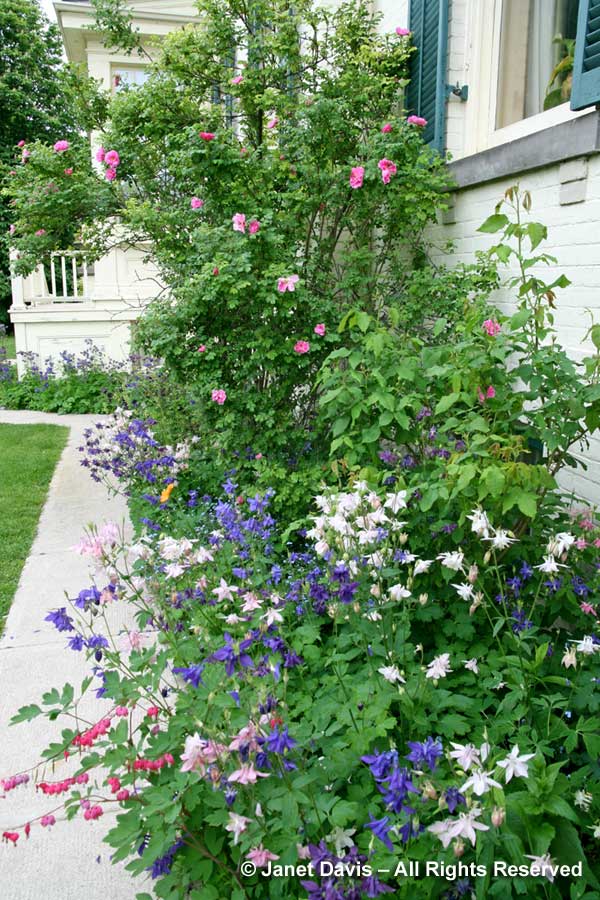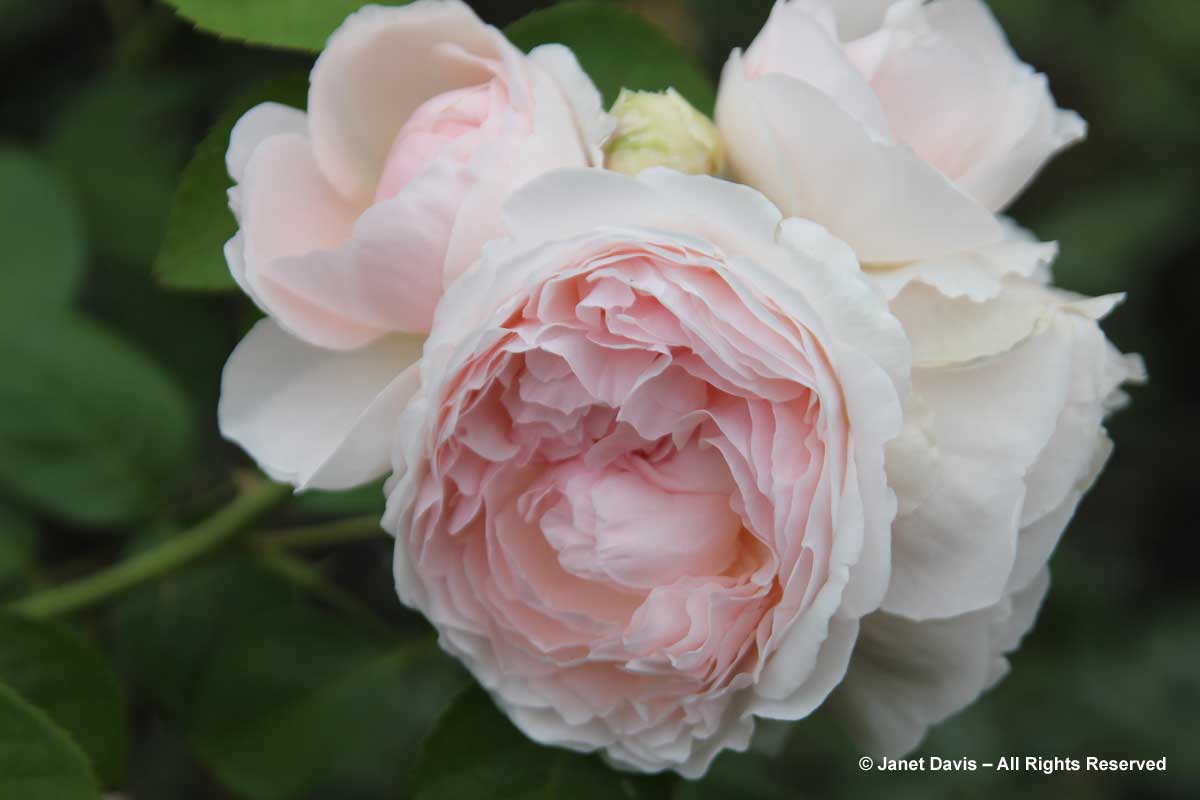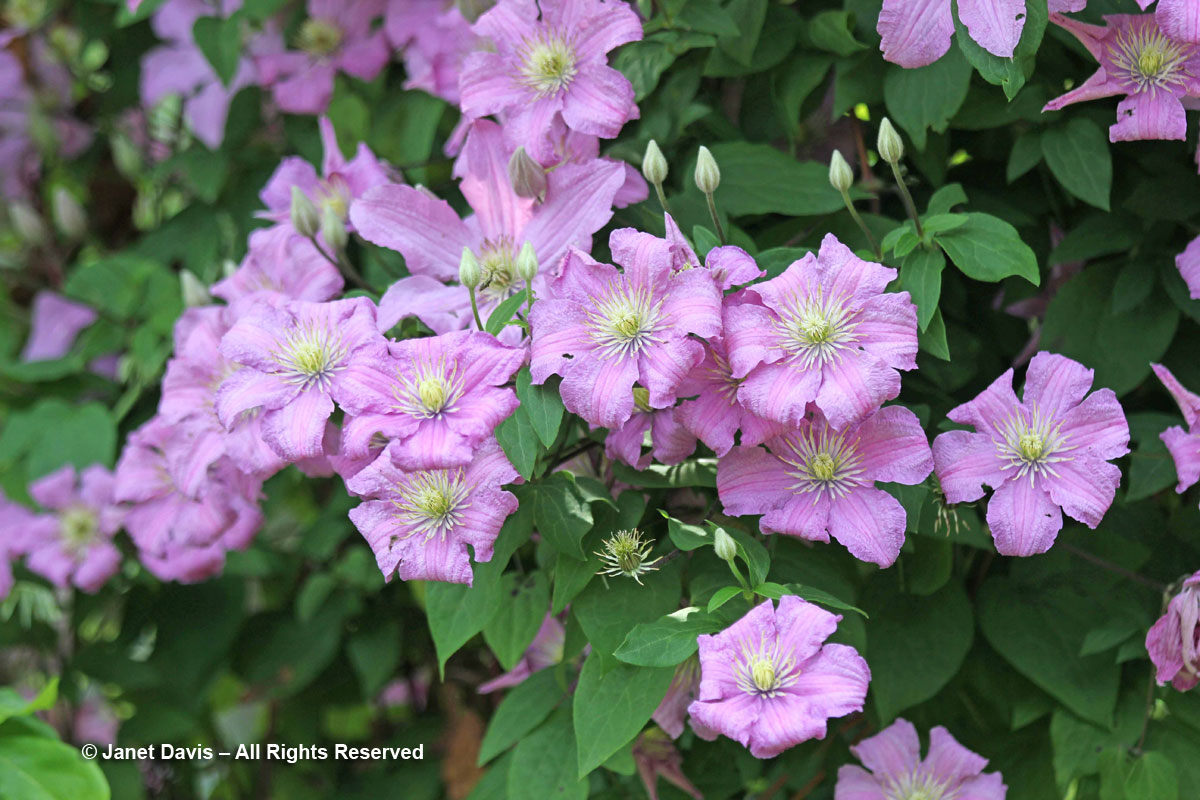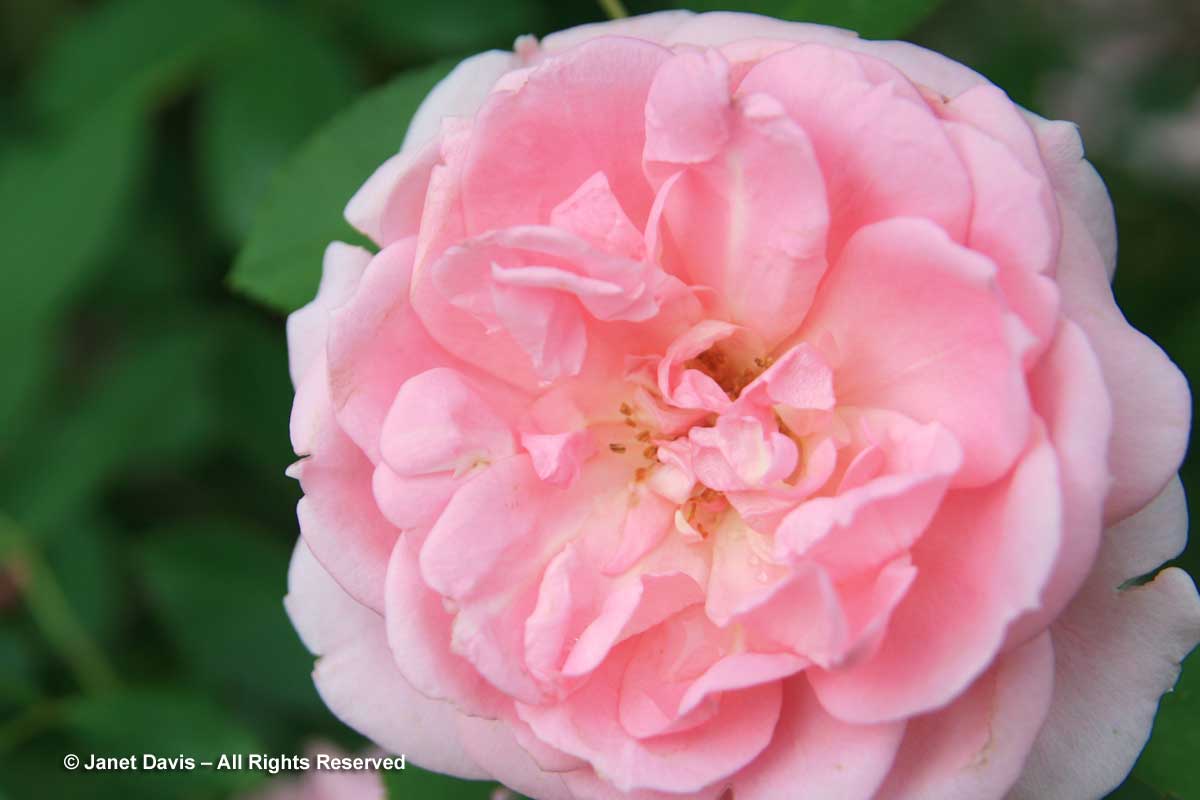La Vie en Rose…. I am not a chanteuse, but I love Edith Piaf. And I am not a rosarian, but I do love roses. That doesn’t mean I’ve actually grown many roses – other than a very constrained ‘New Dawn’ (see below) and a 5-year fling with the yellow-flowered Father Hugo’s rose (Rosa xanthina) which ultimately died in the border, leaving in its wake its progenitor, the pale-pink rootstock dog rose (Rosa canina). Before I pulled it out, I popped a sprig in a vase and photographed it. Amen. Rest in peace.
PEGGY ROCKEFELLER ROSE GARDEN, NEW YORK BOTANICAL GARDEN
But despite steering clear of roses and their fickle needs, I’ve seen many hundreds of them in the 25 years I’ve been photographing plants, and every June I indulge a little fantasy in which I have a garden spilling with their fragrant blossoms. It’s easy to feel that rose fever, when you find yourself wandering the paths of, say, the Peggy Rockefeller Rose Garden at the New York Botanical Garden in the Bronx, as I’ve done for their annual June Rose Festival.
It’s a hugely popular crowd event in early June, with food vendors at the entrance.
It’s in gardens like Peggy Rockefeller that you can see storied roses at the height of their beauty, like ‘New Dawn’ (Wichuraiana, 1930), below, one of the classic, low-maintenance pink climbing roses. I grow this climber myself in a 4 foot-square garden (why did I plant it there? who knows?) against the brick support of my front porch, forgetting to prune it until June, hacking it back when it threatens to trail over the cars in the driveway and generally ignoring it in its spot behind an overly-large boxwood. It has never been sprayed or fertilized, is rarely watered, and gives me sprays of cupped, light-scented, tea-type blooms over the veranda railing in early summer. When happy, it’s a massive thing, growing 10 feet (3 m) tall and 15 feet (5 m) wide – enough to cover a garage wall (And yes, since this is my second PINK blog for the month of May, I’m going to be focusing entirely on pink roses!)
Below is another beauty from Peggy Rockefeller, ‘Climbing Pinkie’ (Cl. Polyantha, 1952) with masses of small pink flowers on almost thornless canes that can reach 10 x 10 feet (3 metres). It’s considered fairly disease-resistant and is an excellent re-bloomer. Because of its growing habit, many gardeners like to train this rose along the top of a fence and let the flowers cascade.
Paul’s Himalayan Musk (Hybrid Musk, c. 1899) is another giant that finds ample room to show off at Peggy Rockefeller Rose garden. A Royal Horticultural Society award-winner, this rambler festooned with masses of drooping clusters of small, double, pale-pink blossoms can reach a stunning 40 feet (13 m) in height in favourable conditions. Shade-tolerant and slightly fragrant, it flowers only once, but with such abundance it can be forgiven for taking a rest for the balance of summer.
If you like landscape roses (I find them a little boring, frankly, as I don’t expect the ‘queen of flowers’ to be “landscape” anything), there are now lots of really good pink ones from which to choose, including the Drift Series from Star Roses. They had several Drifts at Peggy Rockefeller, often interplanted with giant mauve Allium cristophii. Below is ‘Pink Drift’.
EXPLORER ROSES
One of my very favourite roses in the Rockefeller garden, not least for its Canadian heritage, ‘John Davis’ is a gorgeous, ultra-hardy, modern shrub rose, bred in 1977 as part of the Explorer series by the late Canadian rose-breeder extraordinare Felicitas Svejda. Her breeding program to develop shrub roses that rivalled old French roses for beauty while managing to withstand the harshness of Canadian prairie winters (many to -40F-40C) produced some 25 roses from the mid-70s, all with the names of early explorers. ‘John Davis’ is on many rose-lovers’ “favourite” list, with its masses of fragrant, clear-pink blossoms in early summer on a 7 foot (2.1 metre) tall shrub that can be trained as a climber.
Now let’s head across the border to the Royal Botanical Garden in Burlington, Ontario, where we find another wonderful Explorer rose. At 10 feet (3 metres) tall and wide, ‘William Baffin’ (Explorer shrub rose, 1983) is the biggest of Felicitas Svejda’s ultra-hardy introductions (she bred it in 1974 but it was released 9 years later). Gardeners who’ve tried to corral its thorny canes aren’t in a hurry to repeat the experience but the masses of cerise-pink flowers borne in clusters in early summer are truly a magnificent sight.
And bees, like the bumble bee below, love the exposed stamens of single or semi-double roses like ‘William Baffin’. Though roses don’t offer nectar, their pollen is an excellent source of protein for bees.
OLD ROSES
When I want to sniff the incredible perfume of the old garden roses, I make my way to the collection beds at the Royal Botanical Garden. There I can find most of the classics – if I’m lucky, even before they’ve been hit hard by black spot, which tends to be a common problem with many of them. Here are a dozen of my favourites in montage form.
In case you can’t read the caption, they include:
1st row, left to right: ‘Belle de Crecy’ (Gallica, 1829), ‘Ispahan’ (Damask, 1832), ‘Henri Martin’ (Moss, 1863); ‘Variegata di Bologna’ (Bourbon, 1909).
2nd row, left to right: ‘Fantin Latour’ (Centifolia, 1900), ‘Cardinal Richelieu’ (Gallica, pre-1847), Rosa muscosa (Common Moss Rose), ‘Petite Lisette’ (1817-Alba/Damask).
3rd row, left to right: ‘Mme Isaac Pereire’ (Bourbon, 1881), Rosa gallica ‘Versicolor’ (Rosa Mundi), ‘Charles de Mills’ (Gallica, year unknown), ‘Tuscany Superb’ (Gallica, 1837)
Its beautifully-shaped, neon-pink blossoms made ‘Zéphirine Drouhin’ (Bourbon, 1868) a favourite of accomplished gardeners like Vita Sackville-West, and it continues to enjoy popularity today, especially since its branches are thornless. (Those canes tend to flop around, so it should be trellised.) Like all the Bourbons, it is intensely-perfumed and the flowers look like those of the most exquisite hybrid tea. I only wish Wave Hill Gardens in the Bronx, New York, where I photographed Zéphirine, below, could find a more felicitous background for those blossoms than orange brick. Design hint: pink roses look best against olive green and charcoal grey.
With its deep cerise-magenta flowers, the Apothecary rose, Rosa gallica var. officinalis, is another old rose with a very long history. About 4 feet (1.3 metres) tall and wide, extremely fragrant, reasonably disease-resistant and free-flowering in early summer, it is known historically from around 1400 when it was used by ‘officinals’ or apothecaries for medicinal use. I often find this lovely rose in medicinal herb gardens.
DR. HUEY
Speaking of strong colour statements, ‘Dr. Huey’ (Hybrid Wichuraiana, 1914) is an interesting rose. Seen below at Chanticleer Garden (have you read my two-part blog on my favourite public garden?) outside Philadelphia intertwined fetchingly with a light-purple clematis, it was commonly used in the U.S. as a rootstock under budded roses, including hybrid teas and many of the David Austin English roses (in contrast to “own-root” roses). As such, it often emerges as suckering growth – either alongside the purchased rose (quite comical, when it soars high above a yellow hybrid tea) or in its place. But that vigor below-ground does not translate to disease-resistance above-ground, since ‘Dr. Huey’ is known to suffer considerably from black spot and other diseases. Still, those dark, wine-pink flowers on long, outspread canes are a very romantic look, and if you can keep it healthy, cheeky interloper or not, it’s a beauty.
MODERN SHRUB ROSES
Perhaps no rose was as popular in the 1990s in my neck of the woods than Bonica, below In fact, it was named “the world’s favourite rose” in 1997 (but who ran the contest? hmmmm….). Bonica is what I call it, but like many plants these days, that’s just a trade name and its actual cultivar name is ‘MEIdomonac’. Bred by French rose giant Meilland, it’s a lovely thing . Because of its compact 3-4 foot (1-1.3 metre) size can be incorporated into a perennial border of pinks, blues and purples, grown on its own as a specimen, or used as a low hedge. It’s very serviceable, with lovely flowers that look like ‘old roses’. Unlike most old roses, however, it will re-bloom throughout summer when deadheaded.
At the Toronto Botanical Garden, there’s a prominent bed where two modern shrub roses grow in a pretty, all-pink confection The David Austin English Rose Mary Rose (‘AUSmary’) is at the rear, growing to about 4 feet x 4 feet (1.3 m x 1.3 m) while the front features the sweet rose ‘The Fairy’ (Polyantha, 1932).
‘The Fairy’ makes a great companion to English lavender, shown below at Toronto’s Spadina House.
It is disease-resistant and an exceptionally long bloomer, often gathering frost on its last little buds in late autumn. Aren’t those blossoms sweet?
Speaking of Spadina House, I do love the bountiful rose display at the front of the historic home, including the old rambler ‘Dorothy Perkins’ (Wichuriaiana, 1901), below. It was the first rose released by American rose giant Jackson & Perkins, and named by breeder Alvin Miller for Charles Perkins’ granddaughter. Its brash pink might not be for everyone, but it is a party when it’s in flower in early summer, but sadly often plagued with mildew and diseases.
And while I have you at Spadina House, let me show you another charming companion for early-season roses. Look at these enchanting columbines (Aquilegia vulgaris) below, cozying up to the beautiful, scented, hardy rugosa hybrid rose ‘Thérèse Bugnet’.
Many of English rose breeder David Austin’s introductions have the look and perfume of old French roses; some even bear evocative French names. Redouté (‘AUSpale’), below, is a light-pink sport of Mary Rose (mentioned above), and the same height, with ‘fruity old rose’ fragrance. Named for the renowned 19th century painter of old roses, Pierre-Joseph Redouté, it is meltingly beautiful and would have made a prized still life subject for the artist.
Back to Toronto Botanical Garden for another little landscape rose, this time from German rose breeder Kordes. This is cherry-pink Sweet Vigorosa (KORdatura), which looks right at home with June perennials like Veronica longifolia ‘Eveline’, left, Achillea tomentosa, right, and coreopsis in the rear.
ROSES AND CLEMATIS
Growing roses with clematis is a long tradition, especially in European gardens. It’s best to choose a clematis that can be cut back to buds near the ground in spring, i.e. one that flowers on new growth. For the tallest pink roses, a purple Viticella like ‘Etoile Violette’ or ‘Polish Spirit’ would be a good match. In the photo below from Deep Cove Chalet Restaurant (one of my favourite spots to dine) outside Victoria, B.C., we see mauve-pink Clematis ‘Hagley Hybrid’ intertwined with a tallish shrub rose or low climbing rose. I love that look.
Since we’re talking pink clematis, I’ll mention one of my favourites: ‘Comtesse de Bouchaud’ (NOT Bouchard, as it’s often written). This bubblegum-pink vine would be perfect clambering through a pale-pink shrub rose – like one of the David Austins, e.g. Redouté or Queen of Sweden.
Clematis ‘Alionushka’ is a non-twining clematis (the herbaceous C. integrifolia is one parent) that needs something to support it, so it’s a very good candidate for training up into a shrub rose of about the same height.
ONE MORE COLD-HARDY ROSE
Since I’m a prairie girl originally (Saskatoon, Saskatchewan until the age of 6 weeks, when I left for the balmy west coast city of Victoria, B.C., dragging my parents behind me), I’m going to end my homage to pink roses with one that many gardeners consider to be vastly underused. ‘Prairie Joy’ is a product of Canada’s Morden Research Station in Manitoba, a vase-shaped, upright rose to 5-6 feet (2 metres) with a flush of the most gorgeous pink blossoms in early summer, followed by generous repeat flowering throughout summer. Since the very thorny canes tend to swoop down, it is recommended that ‘Prairie Joy’ be trellised or tied loosely to an obelisk.
And on that very pink note, we bid adieu to May and welcome in rose season. But don’t forget to join me in early June, when we’ll be taking a promenade through PURPLE in a gorgeous Toronto garden!



